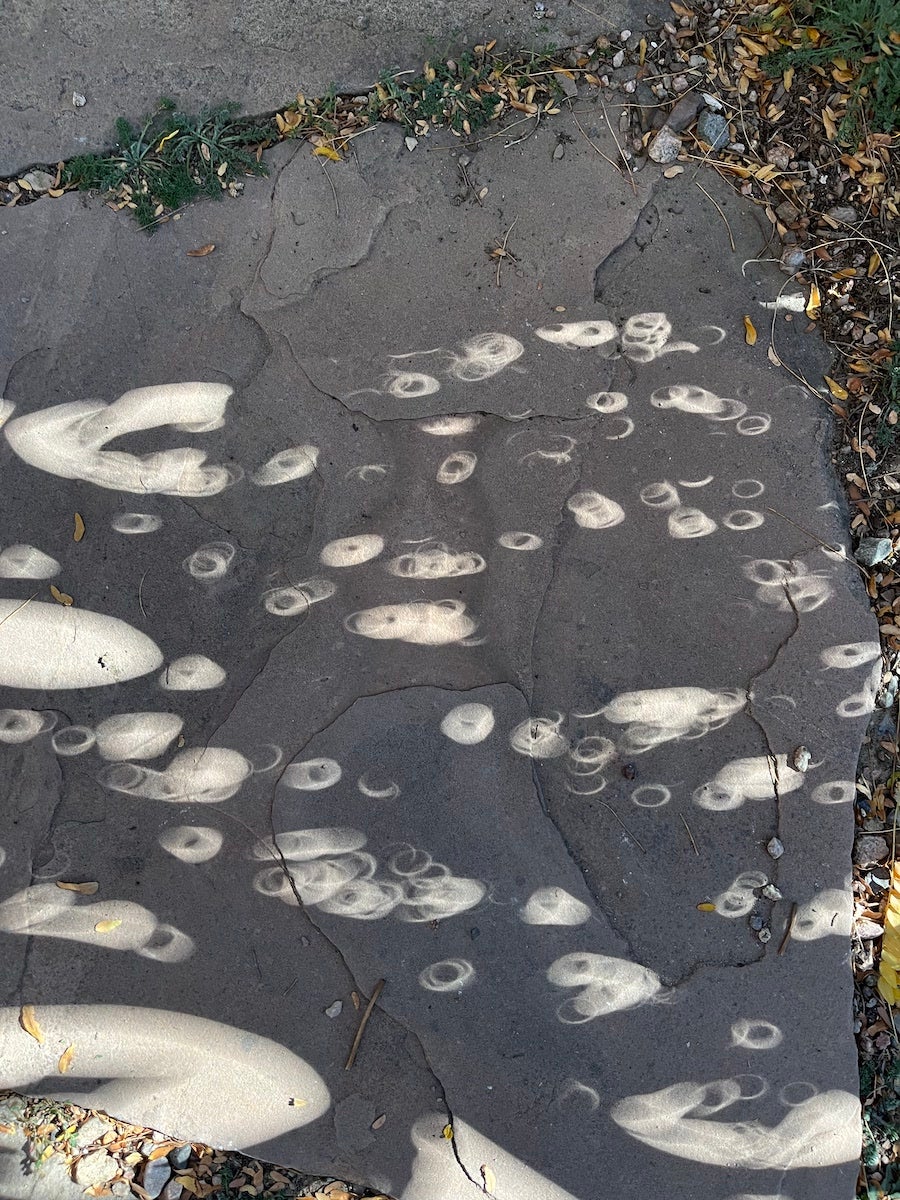
For geologists, ‘Ring of Fire’ immediately brings to mind the predominant ring of earthquakes and volcanos that border the pacific plate. On October 14, 2023, Texas was the center of its own, if very brief, ‘Ring of Fire’. The totality of an annular eclipse.

In spite of what we know about the origins of the phenomena, there is still a visceral heart skipping moment at totality, when the birds and insects become silent in the unexpected twilight.

Eclipse viewing today can be as simple as observing a projection indirectly on the ground through a tree’s leafy canopy, or in a more controlled construct with a pinhole projector, to capturing still images directly through filtered telephoto lenses on our DSLR’s.
What is an Annular Eclipse?
Annular refers to the region or ‘ring’ between two circles, in this case the sun and the moon, whereby the moon is at its farthest from the earth, and thus cannot completely block the fullness of the sun’s disc of light as it passes in front, thus producing a ‘Ring of Fire’.

Below, our EEPS community share their experiences through images of this unusual event, the fourth since 1851, that will not revisit Texas until 2056.
EEPS Earth and Planetary materials course field trip, led by faculty Cin-Ty Lee and Rajdeep Dasgupta, took undergraduates into the path of totality which ran through Albuquerque, NM. Cin-Ty Lee captured these amazing images...



EEPS graduate student Aindrila Pal was in Houston during the event. She enjoyed viewing the eclipse in a variety of ways, with one of the more unusual approaches, using her phone as a telescope to create this image titled, "I 'C' You.'

Gabi Costin chose the classic approach, viewing through an astronomy telescope, living in the moment, but managing to snap a quick shot through the eyepiece with his phone.

EEPS postdoctoral fellow Duncan Keller was also at home in Houston, and captured thousands of eclipses created by the beautiful live oaks that shade our city. As with all good scientific imaging practice, he provided his hand for scale.

Linda Welzenbach Fries, EEPS science writer, journeyed to Corpus Christi in the hopes of capturing the eclipse over the gulf. Waking to the howling winds of a cold front and clouds associated with the rising sun, she took the chance that a few miles north to Goliad might put her beyond the leading edge of the front into clearing. A stubbornly stuck frontal boundary saw clouds continue to build northward, and so she made the painful decision to continue further north, stopping just the nick of time to view totality in the parking lot of a school in Yorktown, TX.
For more information about this event and the upcoming total Eclipse to take place in Texas on 8 April 2024, visit the website ‘The Great American Eclipse’.

